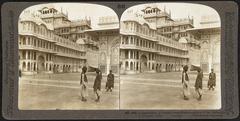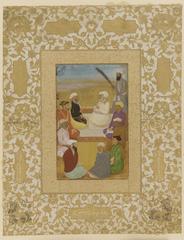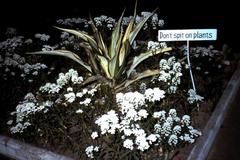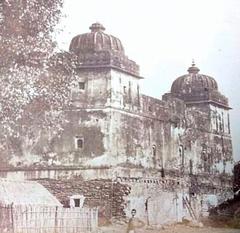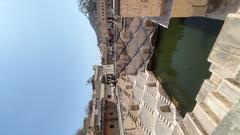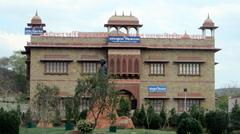Jagadguru Ramanandacharya Rajasthan Sanskrit University: Visiting Hours, Tickets, and Historical Significance in Jaipur
Date: 04/07/2025
Introduction
Jagadguru Ramanandacharya Rajasthan Sanskrit University (JRRSU), located in Jaipur, Rajasthan, stands as a premier institution dedicated to Sanskrit education, research, and cultural preservation. Established in 2001 and named after the revered 14th-century saint Jagadguru Ramanandacharya, the university serves as a bridge between India’s ancient knowledge systems and modern academic innovation. This guide provides detailed information on JRRSU’s historical significance, visiting hours, ticketing, campus highlights, and practical tips for visitors.
Historical and Cultural Significance
JRRSU is a distinguished beacon of Sanskrit scholarship and cultural heritage in India. Recognized by the University Grants Commission (UGC) and recipient of accolades such as “University with Potential for Excellence” and ICSSR “Centre for Advanced Study in Sanskrit,” the university is committed to advancing classical Indian knowledge, including Sanskrit literature, philosophy, astrology, yoga, and allied disciplines. Its integration of digital initiatives and online learning makes Sanskrit education accessible globally, while cultural festivals and academic seminars foster vibrant engagement with India’s traditions (JRRSU Official Website; DevDiscourse).
The campus architecture harmoniously blends traditional Indian design with modern facilities. Its digital library houses rare manuscripts, and the university regularly hosts public lectures and cultural events, attracting scholars, students, and heritage enthusiasts.
Planning Your Visit to JRRSU
Visiting Hours
- Open: Monday through Saturday, 9:00 AM to 5:00 PM
- Closed: Sundays and select public holidays; verify hours during festivals or special events on the official website.
Tickets and Entry
- General Entry: Free of charge
- Special Exhibitions/Guided Tours: May require advance booking or a nominal fee; contact the university’s visitor center for details.
Guided Tours
- Availability: Guided tours can be arranged in advance, offering insights into the university’s history, academic mission, and architectural highlights.
- Booking: Recommended for groups or thematic tours; inquire at the administrative office or via the JRRSU website.
Accessibility
JRRSU is committed to inclusivity, offering:
- Wheelchair-accessible ramps and designated pathways
- Accessible restrooms
- Visitor assistance upon request (contact the university ahead of your visit for personalized support)
Campus Highlights: What to See and Do
- Central Library: Explore rare Sanskrit manuscripts, ancient texts, and digital research assets. The library is a hub for scholars and enthusiasts of Indian philosophy and literature.
- Cultural Events: Attend festivals like Vasant Panchami and Guru Purnima, which feature traditional music, dance, and rituals.
- Architectural Features: Enjoy the campus’s serene gardens and monument-like structures that reflect India’s cultural legacy.
- Workshops and Seminars: Participate in public lectures, academic workshops, and cultural seminars, as scheduled on the university’s events calendar.
Academic and Research Excellence
JRRSU offers programs from undergraduate (Shastri), postgraduate (Acharya), to doctoral (Vidyavaridhi) and post-doctoral (Vidya Vachaspati) degrees, as well as diplomas and certificates in Sanskrit, Vedic studies, philosophy, yoga, astrology, and modern subjects. The university is known for its distinguished faculty, extensive research output, and global collaborations (SelectYourUniversity; SearchYourCollege; IASPaper).
Facilities and Visitor Amenities
- Library and Digital Resources: Access to over 43,000 books and rare manuscripts.
- Hostels and Dining: Separate accommodations for male and female students; mess facilities.
- Accessible Infrastructure: Ramps, rest areas, information desks.
- Parking: On-campus parking for visitors.
- Refreshments: Kiosks available near the main entrance.
Travel Tips
- Best Time to Visit: October to March for pleasant weather and outdoor events.
- How to Reach: Located in Village Madau, near Bhankrota, about 15 km from central Jaipur. Accessible by taxi, public bus, or auto-rickshaw.
- Accommodation: Budget hotels available in nearby localities like Vaishali Nagar, Malviya Nagar, and Bani Park.
- Photography: Allowed in outdoor areas; seek permission for photographing manuscripts or academic activities.
Nearby Attractions
Enhance your visit by exploring Jaipur’s iconic heritage sites, all within easy reach from JRRSU:
- Amber Fort
- City Palace
- Hawa Mahal
- Jantar Mantar
For more, visit Jaipur Tourism.
Frequently Asked Questions (FAQ)
Q: Is there an entry fee for JRRSU?
A: No, general campus entry is free. Guided tours or special exhibitions may have a fee.
Q: Are guided tours available?
A: Yes, arrange through the university’s visitor center or official website.
Q: Can visitors access the library?
A: The Central Library welcomes visitors interested in Sanskrit manuscripts; researchers may need special permission.
Q: What are the best times to visit for cultural events?
A: Key festivals like Vasant Panchami (Jan/Feb) and Guru Purnima (July) are ideal for cultural experiences.
Q: Is the campus accessible for people with disabilities?
A: Yes, with accessible pathways and facilities.
Visual Gallery
See images of the campus, library, and events at the JRRSU Gallery.
Staying Connected
For current schedules, events, and visitor updates:
- Official Website: JRRSU
- Facebook: JRRSU Official Page
- Twitter: @JRRSU_Official
- Mobile App: Download the Audiala app for immersive audio guides and virtual campus tours.
Conclusion
Jagadguru Ramanandacharya Rajasthan Sanskrit University offers a unique blend of academic excellence, cultural heritage, and modern inclusivity. Whether you are a student, researcher, or cultural tourist, JRRSU’s sprawling campus, vibrant events, and dedication to Sanskrit scholarship provide an enriching experience. Plan your visit to immerse yourself in the spiritual and intellectual legacy of Rajasthan and India.

